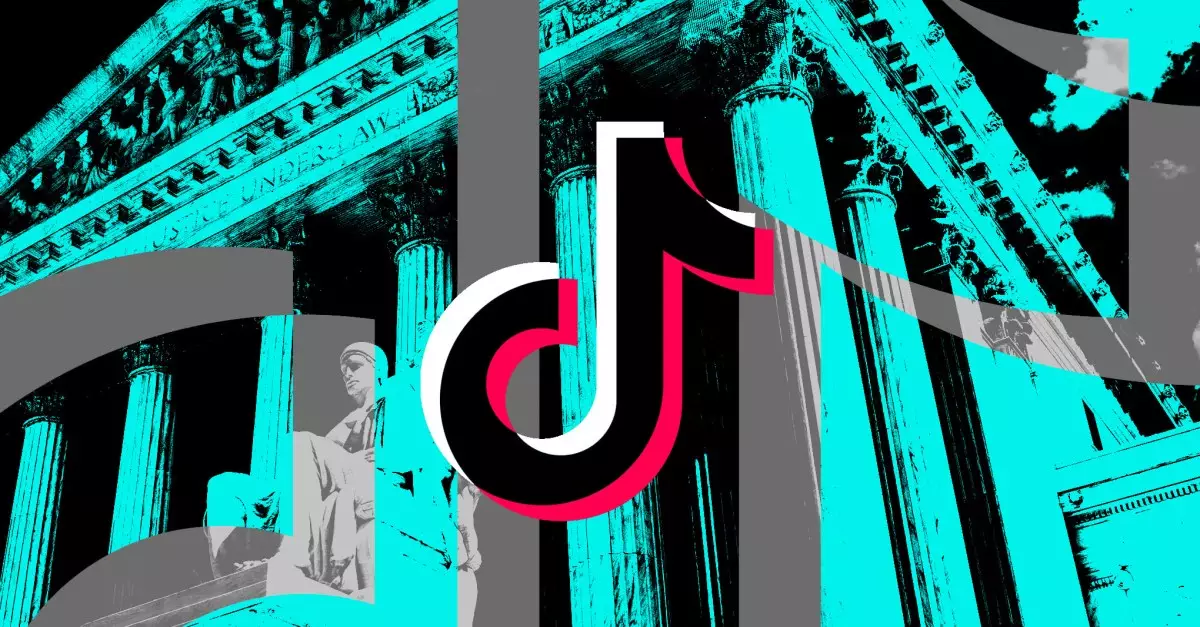The fate of TikTok in the U.S. is one of the more perplexing tales in the tech industry, fraying the patience of social media users and investors alike. As discussions surrounding a potential sale of the app reached a critical juncture, it seemed that a resolution was on the horizon—until the winds of politics disrupted the landscape dramatically. In recent weeks, major players from various sectors were rumored to be contemplating bids for TikTok, as possible solutions appeared to quench the thirst for a resolution that technology and social media stakeholders desperately craved.
However, the rumored interest from giants such as Amazon and even the founder of OnlyFans proved futile. Such aspirations were overshadowed by the unique complications that entangled this high-profile negotiation. The U.S. government’s focus narrowed to a specific Oracle-led consortium, which included many of TikTok’s existing backers from ByteDance. This focus raised eyebrows, particularly with its core objective: creating a façade of separation from its Chinese origins while still maintaining control over its most valued asset, the app’s algorithm.
Political Intrigue: Tariffs and Global Tensions
But just as a sense of optimism began to bubble up, a severe shift transpired when President Trump’s administration ignited a trade war with abrupt tariff announcements. This political maneuver sent ripples through the discussions, damaging what little clarity existed in the negotiations. The U.S. government appeared to retreat from what was shaping up to be a promising transition, casting a long shadow of uncertainty once again over TikTok’s future. The ramifications of this policy extended far beyond the app; they brought into question the underlying relationship between the two global superpowers, as any hope of approvals from the Chinese government receded sharply.
In this twisted public relations narrative between the U.S. and China, comments made by President Trump suggested an uneasy hopefulness—that perhaps tariff relief could facilitate a smoother passage for the potential deal involving TikTok. However, these depending circumstances hinged precariously on whispers rather than assurances, making it increasingly evident that ambitions of a lucrative sale might be dashed.
What Could Have Been: Imagine the Alternatives
Had the negotiations played out differently, a myriad of outcomes could have emerged that might have benefited all parties involved in the TikTok saga. The Oracle-led consortium was not just a lifeline for the platform itself but a path toward semblance and stability for its employees and investors. They stood to resume their business with renewed certainty, sparking economic confidence in an otherwise tumultuous environment of tech layoffs and corporate restructuring.
This complex intersection of technology and governance could have ushered in significant changes in how platforms could operate under scrutiny, paving the way for a new era where tech companies could learn to navigate the rocky terrain of geopolitics with agility. Many observers believed that an amicable solution would have empowered TikTok to flourish in the U.S. while providing a revenue stream for American companies. The possibility of innovation-driven regulatory frameworks seemed ripe, but political barriers made those visions unattainable.
Legal Grey Areas: The Illusion of Compliance
Despite these glimmers of hope, the reality remains both messy and unclear. As the Trump administration thrust TikTok’s future into limbo, it came to light that the platform had effectively found precarious shelter under the legal framework outlined by an administration that neglected to enforce the ban authorized by Congress and later maintained by the Supreme Court. Yet this apparent leniency does not negate the looming threat of a ban in the event that tariffs remain unchanged. TikTok’s reliance on U.S. hosting providers—including tech stalwarts like Apple and Google—hints at a precarious balancing act on the edge of legality.
On the one hand, the app continues to stave off catastrophe of a shutdown, yet it exists in this peculiar state that jeopardizes its potential for both independent and expansive growth. As investors face existential dilemmas, TikTok’s leadership must navigate turbulent winds that lack any semblance of stability, leading to discontent among employees and users alike.
The Broader Tech Landscape: Not Just About TikTok
The turmoil surrounding TikTok doesn’t exist in isolation; it reflects broader currents within the technology sector. Other leading companies—whether they are navigating layoffs or political interventions—are equally affected by this shifting paradigm that seems to favor short-term gains over long-term stability. As we observe disruptions, such as Microsoft’s protests over its AI dealings or Adobe’s cuts affecting diversity initiatives, one question looms large: What will this mean for the future of innovation when companies must dedicate their focus to survival rather than growth?
At a time when collaboration, creativity, and technological advancement are essential, such distractions could derail progress at a crucial juncture in history. What is clear is that this ongoing saga will not only shape TikTok’s future but will likely echo throughout the tech landscape for years to come, leaving a trail of questions regarding how we balance business with ethics, politics with innovation, and the delicate threads that unite technology with society.

